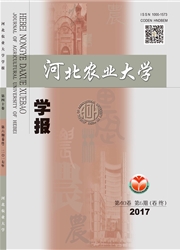

 中文摘要:
中文摘要:
以天目琼花(Viburnum sargentii Koehne)和花叶锦带(Weigela florida CV.Variegata)1年生休眠期枝条为试材,研究了低温胁迫下枝条内细胞超氧化物歧化酶(SOD)和过氧化物酶(POD)活性,丙二醛(MDA)、可溶性蛋白、脯氨酸含量以及枝条相对电导率的变化规律。分析了各种生理生化指标对天目琼花和花叶锦带抗寒性的影响。结果表明:随着处理温度降低,天目琼花和花叶锦带枝条内SOD、POD酶活性和脯氨酸含量均呈现先升高后下降的趋势;MDA、可溶性蛋白含量随温度降低逐渐升高;相对电导率随处理温度降低呈“S”形上升,其枝条的半致死温度(LT50)分别为-16.36℃和-19.21℃,抗寒性强弱为:花叶锦带1年生枝条〉天目琼花1年生枝条。
 英文摘要:
英文摘要:
One-year-old branches of Viburnum sargentii Koehne and Weigela florida cv. Var- iegata were used to study the activities of superoxide dismutase (SOD) and peroxidase(POD), the content of malondialdehyde (MDA), the content of soluble protein and the content of pro- tein, and the relative electrical conductivity under different low temperature conditions. The relationship between cold hardiness and these physiological indicators was analyzed. The re- sults show that the activities of SOD and POD and the content of proline increased early and decreased later, while the content of MDA and soluble protein increased with the temperature decreasing. The relative electric conductivity increased as S curves with the temperature decreasing. Lethal temperatures (LT50) of branches were--16. 36 ℃ and--19.21 ℃ respectively. The order of cold resistance was as follows; W. florida cv. Variegata〉V. sargentii Koehne.
 同期刊论文项目
同期刊论文项目
 同项目期刊论文
同项目期刊论文
 期刊信息
期刊信息
